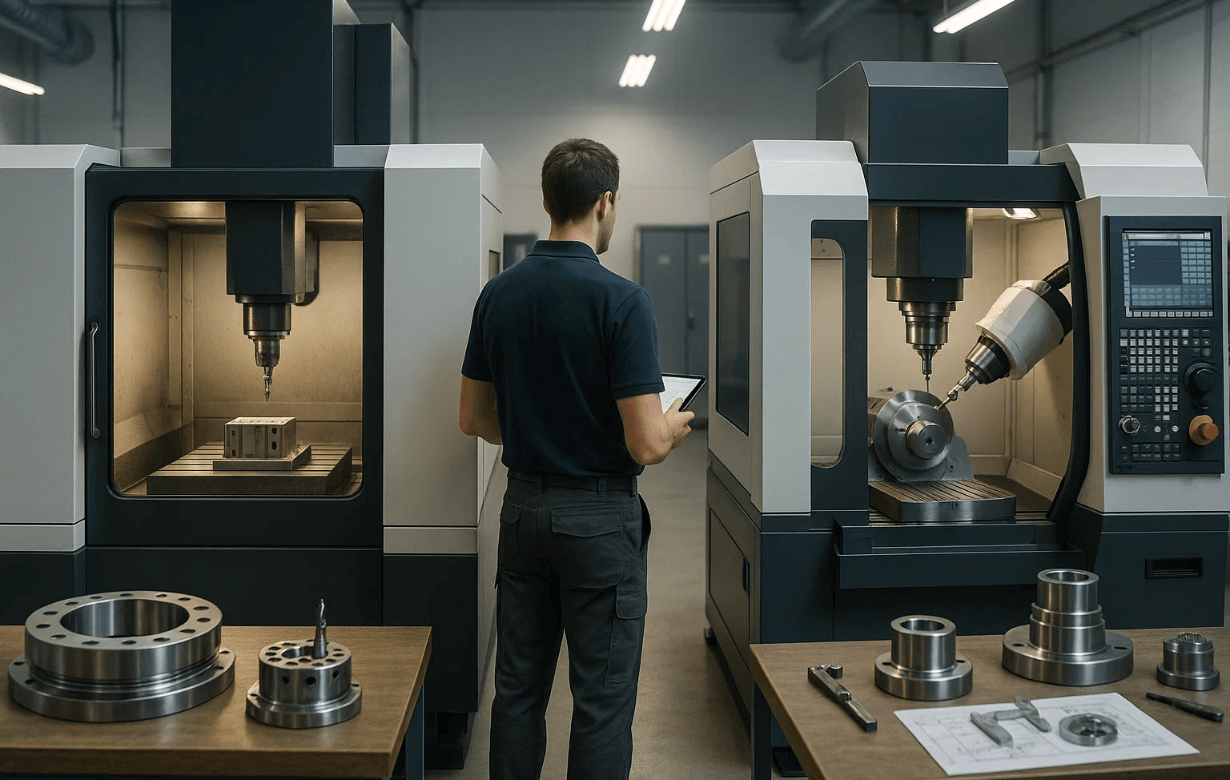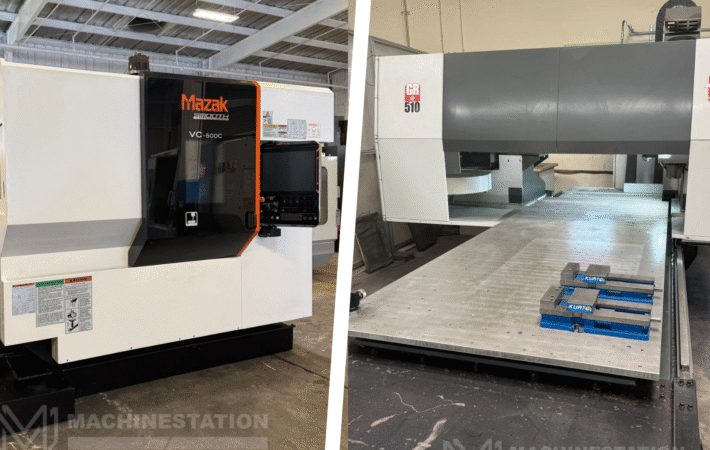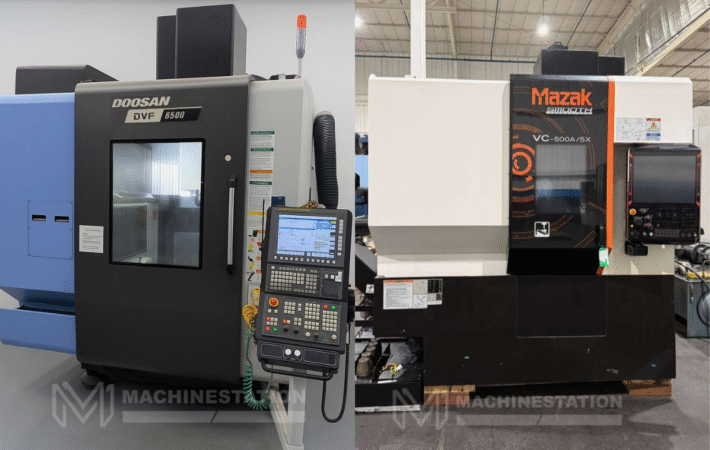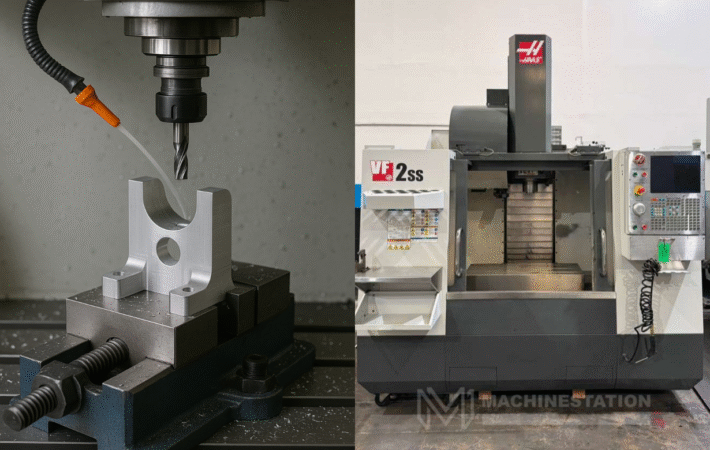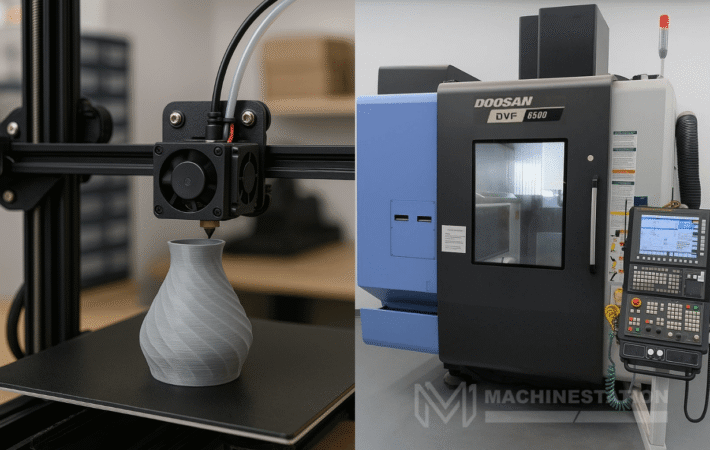CNC machines are one of the best tools used for machining works known to mankind. These machines can do complex machining work at super fast speeds, and they are evolving with time. From 3-axis CNC machines to 5-axis CNC machines, they have become more advanced and efficient. With the increasing number of axes, the CNC machines just get better and faster at the work they have to do.
But you don’t always need to buy a new 5-axis CNC machine and replace your 3-axis one to enjoy the benefits of the former. You can upgrade your pre-existing 3-axis CNC machine into a 5-axis one by following some steps. The process may take some time and require an investment of money, but it will make your machine more advanced. So, if you’re excited about learning how to upgrade your CNC machine or if you’re interested in doing so, then reading this article can be of great help to you.
Understanding the basics:
Let’s first discuss the basics i.e. the meaning of both 3axis and 5axis CNC machines and how are they different:
3-axis CNC machines:
A 3-axis CNC machine is a CNC machine that works along three linear axes: X (left-right), Y(forward-backward), and Z(up-down). These machines are mainly used for machining simple geometric shapes and in industries like turning, drilling, and milling.
5-axis CNC machines:
5-axis CNC machines are the ones that have two axes other than the three basic axes (X, Y, and Z) and they are referred to as the A and B axes. Where the A axis rotates around the X axis and B rotates around the Y axis. These configurations of the 5-axis CNC machines help them machine a product from any angle which helps in manufacturing parts with complex geometrical configurations, which gives them the main edge over 3-axis CNC machines.
Why upgrade from 3-axis machining to 5-axis machining?
Before we start talking about how to upgrade a 3-axis machine to a 5-axis machine, we need to know the different benefits of upgrading to 5-axis machining for your operations:
- Increased complexities: The best advantage of upgrading to 5-axis CNC machining is that you get to machine products with complex geometrical configurations and also intricate parts like angled holes and curved surfaces in just one setup. To do the same using a 3-axis CNC machine, you will need to have multiple setups.
- Better surface finish: A 5-axis CNC machine is able to approach a product from different angles which helps in giving a superior surface finish to the CNC machine which also reduces the need for manual machining.
- Reduced setups: To machine complex parts in a 3-axis CNC machine, you will need different setups with each requiring precise fixturing and alignment. A 5-axis CNC machine on the other hand can help you to do that all in a single setup reducing setup time and increasing overall productivity.
- More accuracy: More setups means more probability of human errors and when you minimize the number of setups you also reduce the potential of human errors during the repositioning and refixturing of the workpiece.
Types of 5-axis upgrades:
Here are the different methods for 5-axis upgrades that you need to know before you know the steps to make those 5-axis upgrades:
- Trunnion style upgrade: In this upgrade, one adds a trunnion style rotatory axis to the machine table which helps with simultaneous 5-axis machining.
- Tilting rotatory table upgrade: In this style of upgradation, one needs to add a tilting rotatory table to the machine which further helps in enabling 4 or 5-axis machining.
- 5-axis conversion kits: These kits help in the complete conversion of a 3-axis CNC machine into a 5-axis CNC machine, as they typically include a new spindle, control system, and rotatory axis.
Steps to upgrade your 3-axis CNC machine into a 5-axis CNC machine:
Finally here are the steps that you will have to take when you want to upgrade your 3-axis CNC machine to a 5-axis one:
-
- Assessing the machine: In step number one, you will have to assess whether your current 3-axis CNC machine can accommodate different additional components needed for 5-axis machining. Here’s how you can do that:
- Ensure that the machine’s frame can support additional parts and their movements.
- Make sure that there is enough space to add a rotatory axis and other components.
- Determine whether the current CNC control system can manage the additional axes or if an upgrade is necessary.
- Choosing the upgrade type: In the next step you will have to choose the upgrade type which can be the trunnion type or rotatory table type. A trunnion setup is ideal for parts that require machining on multiple sides, and a rotatory table is better for cylindrical parts and some complex geometries.
- Upgrading the controller: Before making physical changes to the CNC machine, you will have to upgrade the control system of the machine as that is the brain of the machine. You will have to upgrade to systems that will offer:
- The controller supports 5-axis machining and can control them simultaneously.
- The system has advanced programming capabilities helping with complicated machining strategies and toolpaths.
- It will be an added advantage if the controller has a friendly UI which will minimize the learning curve and operational errors.
- Change the hardware of the machine: Once the control system of the machine is upgraded, it is time for the main change which is the hardware change. Here are some hardware modifications you will have to do:
- Mount the rotatory axes securely to the machine’s bed.
- Install new servo motors to drive the additional axes, with the appropriate drive electronics.
- You may also have to upgrade the spindle that can work under the highly demanding work situations of a 5-axis CNC machine.
- Strengthen the machine’s frame if necessary to support the additional parts and their movements.
- Upgrade the software: You will have to update your CAM software to get the most benefits of your 5-axis CNC machine. You will also have to ensure that the new software can generate a toolpath for 5-axis machining while being compatible with your control system. Some of the popular CAM software options are Fusion360, Mastercam, and SolidCAM.
- Calibration: After you are done upgrading your CNC machine’s control system, software, and hardware you will have to thoroughly calibrate your CNC machine to ensure that all the axes are functioning properly. You can perform test runs to verify the machine’s accuracy. You will also need specialized devices such as electronic tools, dial indicators, and laser trackers to ensure proper alignment.
- Assessing the machine: In step number one, you will have to assess whether your current 3-axis CNC machine can accommodate different additional components needed for 5-axis machining. Here’s how you can do that:
Challenges with the upgradation:
Here are some of the general challenges that you will have to encounter during this upgradation:
- The machine must be rigid enough to handle the new weight. If the old machine is not rigid then you will face vibrations and inaccuracies during the whole machining process.
- You will have to invest a good amount of money to upgrade your 3-axis CNC machine into a 5-axis one, and the price will only go up depending on the complexity of the upgrade.
- Machining with a 5-axis CNC machine is complex, especially the programming part as it will need expert programmers to do so. So you will have to spend a good amount of time and money on employee training too.
- You will have to face downtime as the machine will be out of use during the upgrade process, which will further hamper your production schedule.
- You will have to focus more on maintenance as a 5-axis CNC machine needs more maintenance than a 3-axis CNC machine. You will have to recalibrate the rotational axes after every 500 hours of operation.
Alternatives to full upgrades:
If you think that the full upgrade of a 3-axis CNC machine to a 5-axis machine is becoming too complex for you or you’re having budget constraints, then here are some other ways out for you:
-
- 4-axis machining: Just adding one rotatory axis can also change the machine’s potential so make sure whether you need 5 axes or it can be done with 4 axes as that will save cost and make the process simpler.
- Outsourcing: If you need the 5-axis machine for a small number of works then you might just outsource that work to another machinery shop over doing it in house.
- Buying a used 5-axis machine: If the process of upgrading looks complex for you and you don’t have the right expert to do this job for you then you can just buy a used 5-axis CNC machine from MachineStation.
Conclusion:
The process of upgrading a CNC machine from 3 axes to 5 axes is both time-consuming and costly but the advantages are also very high as the 5-axis machine will be able to help you do far more complex machining work than a 3-axis machine. So, if you need a 5-axis machine you can either do this upgrade or look for a used 5-axis machine.

